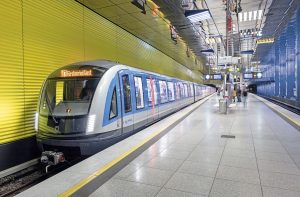The website on April 6, 2023, ran an article titled “Need for Underground Metros Urgent as Kampala is Named World’s Fastest Growing City.” Today, this article will look at metros and what Uganda would look like after their implementation.
The Royal Norwegian Embassy in Uganda’s Minister/Counselor and Deputy Head of Mission Reider Bergum announced on his Twitter handle that Kampala’s growth would reach 112% by 2035.
“Kampala has a population of over 4 million and is projected to grow by 11% from now until 2035. Sustainable urban planning and multi-level public transport systems are key, time to consider underground metros,” tweeted Bergum.
What Metros are and how they differ from Trains and Trams
Metros are a mass rapid transit (MRT) type of high-capacity public transport that is generally found in urban areas that cover short distances. A system that primarily runs below the surface may be called a subway, tube, or underground. The Metro trains are designed to be driven on independent rail lines.
The railway system consists of a series of connected vehicles that run along a railway track and transport people and goods. Local trains are forced to share tracks with trains that are meant to cover long distances over the course of the day and night.
Trams are trolleys or streetcars that have been modified to transport people from one place to another by using electricity from overhead cables while running on trucks that are set on the sidewalk.
In order to connect the distances between the city and suburbs of a metropolitan city, metros are designed to run within metropolitan cities with a population of around 50, 000 people or more in order to connect the distances between the city and suburbs of the metropolitan city.
The working principle of metros is based on the concept of electric grip, which is powered by an electric motor that pulls the train along trucks. The electric motor converts the electrical energy from the power supply into mechanical energy, which is then used to move the train.
Importance of Metros
Eco-friendly: In comparison to road-based systems, eco-friendly metros produce no air pollution, emit less noise pollution, and consume up to 20% less energy per passenger kilometer.
Time-saving: Because they are electric, they can travel 45 kilometers in 15 minutes and 180 kilometers in an hour which would take longer by vehicle. It will also save time since there is no traffic on the metro trucks.
Capacity: A single metro can hold 1000 people or more, which equates to around 200 automobiles worth of people. If they were available in Kampala, the city would be de-congested of cars and traffic jams.
Payments: Making a monthly payment and getting a card will cheapen transportation costs. Each time one uses the metro, they would just use their cards instead of paying hard cash like it’s done at the road tolls.
The metro system would be the most important transportation system in urban infrastructure like Kampala; it would play a crucial role in urban social and economic development, specifically in reducing traffic congestion and jam.

